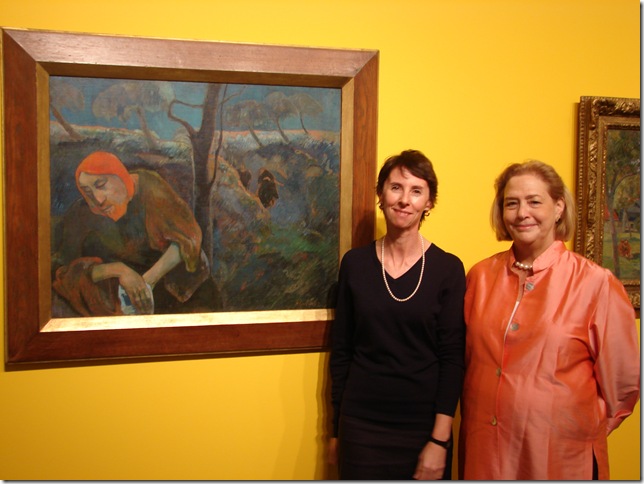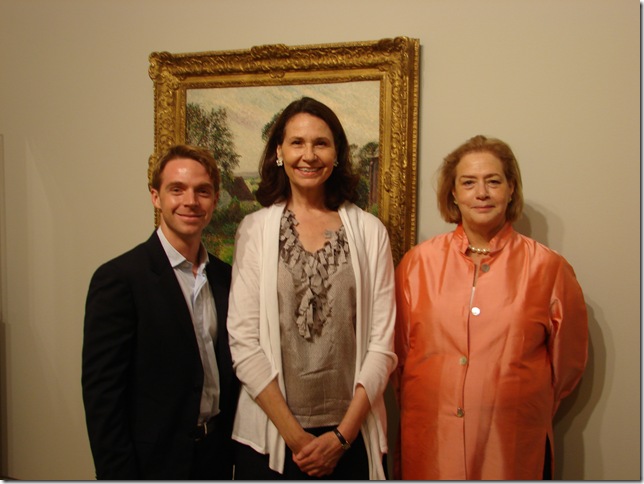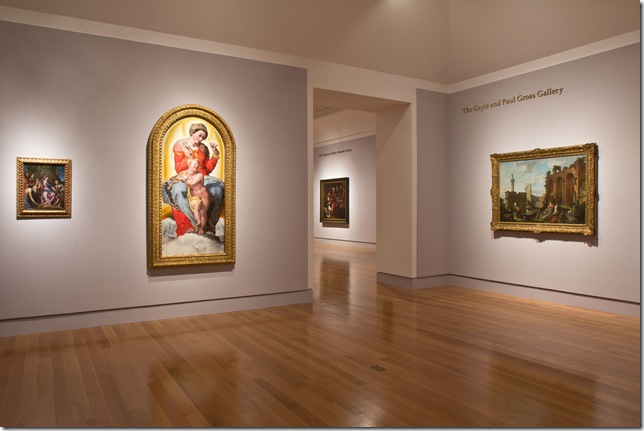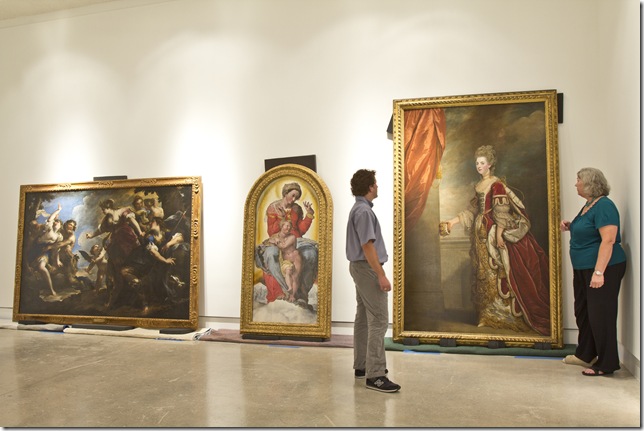“Visitor experience” is a phrase one hears a lot these days when museums are the topic of discussion.
Now, more than ever before, many, as a direct result of cuts in government funding for the arts, are focusing on how to make changes that keep people coming back to the museum because it is an enjoyable place to be. This can also mean that museums must now find ways to reintroduce themselves as more universally appealing, so that the public’s perception of them is less as an elitist institution and more as a welcoming abode.
The Norton Museum of Art is no exception. Despite the fact that last year the museum had record attendance, with more than 115,000 visitors, an 18 percent increase from 2009, officials want to do more to entice new and returning visitors. Today, the museum reopened after a three-week renovation to reevaluate its layout and to reinstall the art in many of the first- and second-floor galleries—all to make the museum more amenable for visitors.
“The reason that you reinstall galleries the way we have is that the relationship with paintings, and the way in which they’re installed, has an impact on how people perceive them and on the art historical record,” said Hope Alswang, the Norton’s executive director. “So, from time to time it’s really important to reconsider your pictures and to understand these relationships.”
The enhanced visitor experience extends beyond just moving around works of art, and includes making the visitor feel more comfortable and relaxed within the museum space. To do this, the Norton has added seating within the front lobby, which is also getting an overhaul, and within many of the galleries. “You’re going to see more and more visitor amenities over the years as we reinstall,” Alswang said.
The current makeover, however, is only one part of the museum’s overall vision to create a more hospitable environment. Long-term plans involve the London-based architectural firm, Foster + Partners, and a design studio project with 12 graduate students from the architectural school at the University of Miami. That project was coordinated by Palm Beach resident Elizabeth Dowdle, who serves as a planning and historic preservation consultant to the Norton.
Foster + Partners has been hired to audit the space and to address both visitors’ needs and curatorial needs by evaluating its current use and crafting an ongoing, future plan for the best use of the interior space, the external landscape and six adjacent external properties. They’ve done similar projects with other significant cultural institutions, including the Museum of Fine Arts in Boston and London’s British Museum.
“A lot has to do with re-understanding the existing structure and circulation and how circulation can be improved, but it’s also about the entire site and even how landscape can contribute to the overall experience,” said lead architect Michael Wurzel. “We’ll also be able to evaluate and improve how the museum operates in terms of sustainability.”
For the graduate students at the University of Miami, led by professor Sam Roche, the focus will be on history. They will evaluate the museum within its historic neighborhood and help determine a plan for restoration and adaptation of the six historic properties that the museum owns on Crane Nest’s Way, which were built in the 1920s through the 1940s, and are currently designated as rental properties.
The students specialize in designing neighborhoods, streets and civic spaces that are pedestrian-friendly and in understanding how individual buildings fit into the existing fabric of towns.
“Our mission here is to look at one part of the master plan and really to determine how these houses can work together as a group and, really, how they can work individually,” Roche said.
Within the museum space, color is something that has been reevaluated as part of the installation, and many of the walls have been repainted. The colors are striking and warm — deep reds, rich grays, bright yellows — and they serve to create a cozier atmosphere, more reminiscent of a Greenwich, Conn., estate than the white space gallery we’ve grown to associate with museums. This actually does make one feel more comfortable within the surroundings. And the paintings seem more vibrant, too.
The use of different colors on the walls is something that can be controversial, Alswang said. “This is a really difficult issue within a museum and with works of art, in this case from different countries, and different kinds of work — you are asking them to sit on a color that has to be equally beautiful.”
Alswang acknowledged the contribution made by the museum’s curator of contemporary art, Cheryl Brutvan, for choosing the colors and also acting as the lead curator for the reinstallation, with the assistance of curatorial associate Jerry Dobrick.
The Norton has been challenged in the presentation of its collection of modern and contemporary art, because of a lack of exhibition space. While the reinstallation is not greatly increasing the gallery space for this collection, officials are moving the collections and there are some small space additions downstairs, such as in an area that sits near the doors to the exterior courtyard, where work by Josef Albers and a new work by Nick Cave will now reside.
The two galleries that are adjacent to the entranceway at the rear of the lobby will now house the modern collection, rather than the special exhibitions regular visitors expect. The special exhibition space is now a large, warehouse-like area to the rear of these galleries that has been renovated.
Overall, the reinstallation provides for showcasing contemporary art in a manner more conducive for this type of art, which can be larger or more oddly shaped than traditional works, and sometimes can even include electronic elements that can detract from adjacent works. The new spaciousness is evident in the new location for a multimedia sculpture by Dan Flavin, an acquisition made possible by The Contemporary and Modern Art Council. Now the work nestles perfectly into a corner viewing space that provides ample room for contemplation without distraction.
Brutvan said more is on the way. “There will be an additional gallery that will house recent acquisitions—photography and contemporary,” she said.
The defining elements of the new changes at the Norton are a sense of spaciousness and a continuity that was lacking before. The paintings and other works seem to have more breathing room and it’s refreshing to see them hung in a new manner that also creates new relationships. It’s also easier now to navigate because there’s an intuitive flow that was missing before when special exhibitions interrupted the permanent collections.
“We’re trying to create a different version of logic of how we use these spaces because before, as many visitors came through, they didn’t know where they were. Suddenly they’re going through an exhibit and then they’re back in the collection,” Brutvan said. “So, now we’re trying to make it that you’re in the collection.”
Brutvan also noted that the changes are ongoing and uphold the vision of founder Ralph Hubbard Norton, who died in 1953. “Mr. Norton liked things to change, as I discovered in doing research, so that it really did look different when people came back,” she said. “He was constantly reinstalling and adding new things based on his acquisitions.”
Jenifer Mangione Vogt is a marketing communications professional and resident of Boca Raton. She’s been enamored with painting for most of her life. She studied art history and received her B.A. from Purchase College. Visit her blog at www.fineartnotebook.com.
The Norton Museum of Art reopened today. Regular visitor hours for the museum are Tuesday, Wednesday, Friday and Saturday from 10 a.m. until 5 p.m., Thursdays from 10 a.m. till 9 p.m.; Sunday from 11 a.m. until 5 p.m. Admission is $12 for adults, $5 for visitors aged 13-21 and free for children under 13. Admission is free for West Palm Beach residents every Saturday and free for Palm Beach County residents on the first Saturday of each month, with proof of residency. For more information, call 561-832-5196 or visit www.norton.org.




